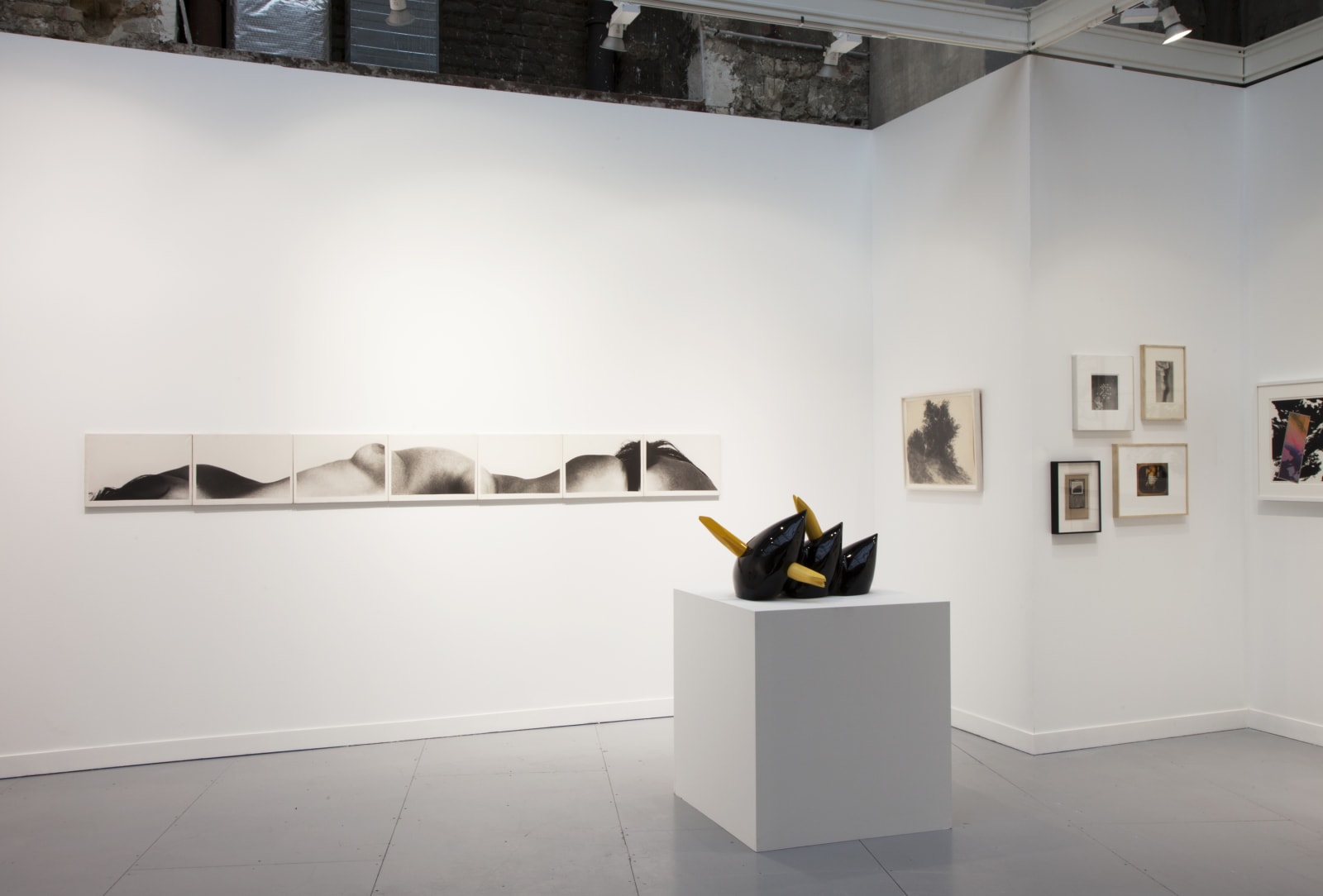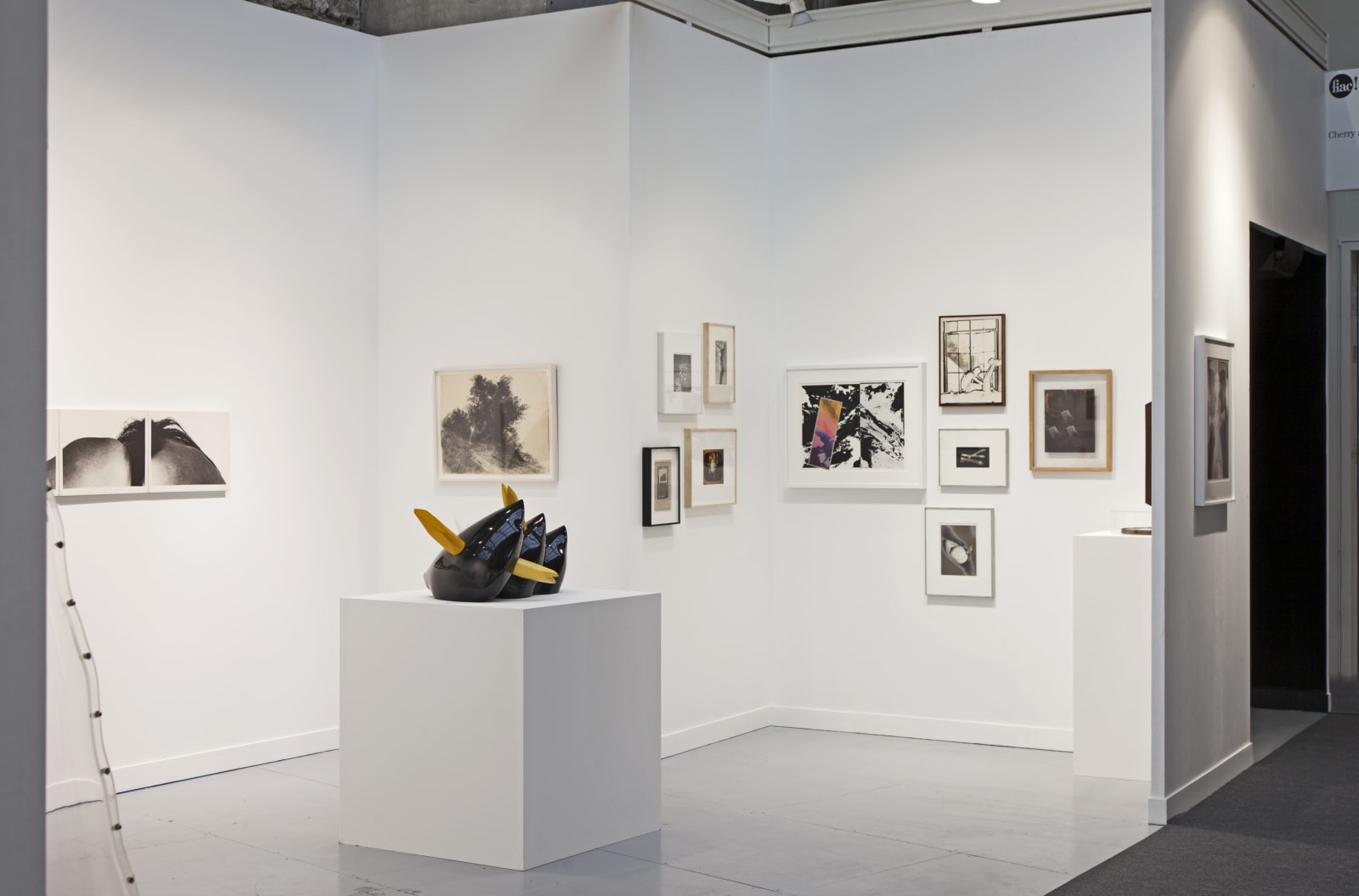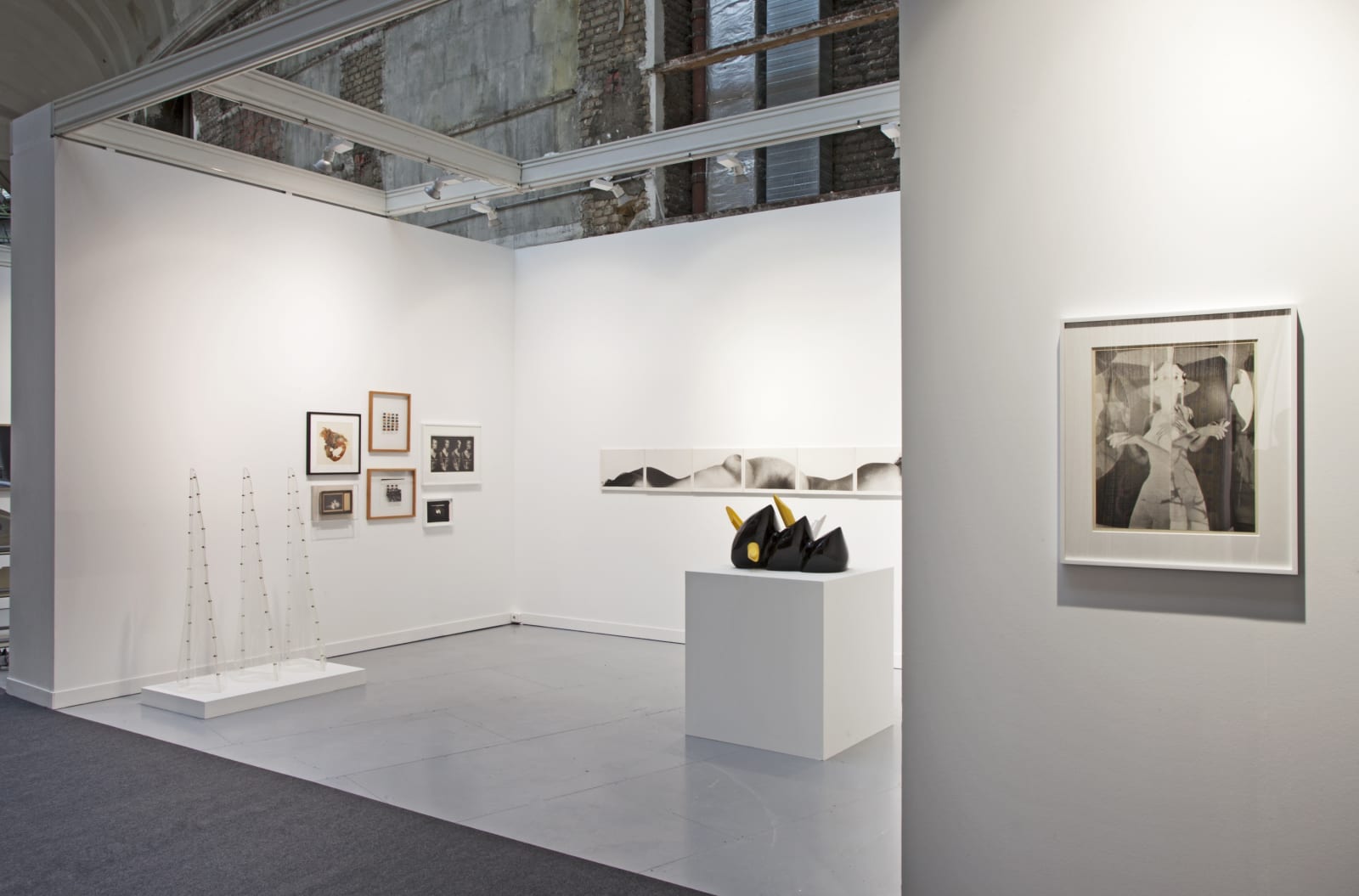(Cherry and Martin archive - Cherry and Martin is now Philip Martin Gallery.)
EXPANDED PHOTOGRAPHIC/MATERIAL PRACTICE
AT THE UNIVERSITY OF CALIFORNIA, LOS ANGELES (UCLA) 1963-1973
FIAC
Booth 1.G03
Vija Celmins, Carl Cheng, Darryl Curran, John Divola, Robbert Flick, Llyn Foulkes, Max Hein, Robert Heinecken, Pat O'Neill, Michael Stone, Edmund Teske, and Todd Walker
At FIAC, Cherry and Martin presents an exhibition of works produced by teachers and students at the University of California, Los Angeles (UCLA) from 1963-1973. Some of these artworks have not been seen in decades. None have been previously seen in Europe.
The 1960s and early 1970s were heady times for expanded photographic/material practice across the United States and Canada. Then as now, manipulated photography and the found image played a role in a range of movements in Los Angeles, from the Beat era of the late 50s to the experimental and textual photo scene of the 70s. The University of California, Los Angeles (UCLA), a large state school with the facilities to offer a wide range of design and art classes, served as an artistic meeting point in Southern California. The school provided a unique environment for experimentation and expressive freedom, connecting generations of artists with a wide range of interests and concerns, shaping the work of teachers and students alike.
Much of the work made by those associated with UCLA reflects the program’s emphasis on social commitment and its ongoing interest in the materiality of the photographic process and image-based communication. The focus on the materiality of the photograph at UCLA diverged perhaps from the accepted documentary role of photography at the time evinced in other parts of the United States; indeed, many of those working at UCLA often discussed the photographic image as an ‘object’ rather than as a ‘picture.’ There was a real interest at UCLA in photography as a ‘plastic art’ - an art with a manipulatable film base - one that could be altered for an array of applications.
Prior to Heinecken’s establishment of the photography department in 1963, students learned photographic practice in the context of a design curriculum (where photographic processes were inextricably linked with printmaking, graphic design, industrial design and other ‘commercial’ arts). Renowned designer Henry Dreyfus framed design as a socially conscious discipline that bridged engineering, ergonomics, and aesthetics. Teachers like Don Chipperfield and Tom Jennings introduced exploratory photo techniques. And many at the school worked with or had at least visited the studios of Charles and Rae Eames, who pushed the idea that there was "no border between fine arts and design" and that "anything could be art."
In the early 60s, a number of students - including Carl Cheng, Darryl Curran and Pat O’Neill - worked with Heinecken to make a project for the Eames-curated 1963 Aspen Design Conference. The result, entitled, “Image Ideal,” was a chance-driven, multi-screen projection of found images and found sound with parallels perhaps to the Eames’s own multi-channel film installations of the 1960s. Vija Celmins, a painting student, studied alongside Cheng, Curran and O’Neill; Celmins made a mark for herself bucking the expectations of the painting area - with its focus on ‘School of Paris’ artists like Matisse and Picasso- in order to create her landmark photo-derived drawings and paintings.
Pat O’Neill recalls that, “Studying design yielded a foundation in problem solving and communication with far-reaching benefits for me…One of my instructors in graphic design was Robert Heinecken, whose trajectory was similar to my own. He was a designer who came to embrace photography. He undertook the radical project of liberating photography from mechanical technique and sought to establish it as an art form in its own right. This was a battle that had been going on for at least a century but had not yet touched the fine arts department at UCLA. His success in this struggle originated a new course of study. I found the discussions in Heinecken's classes to be particularly relevant to real-life questions. I was captivated by the idea of the photographic image as a mirror of the maker's mind and a revelation of belief, instinct, and heritage. I became Heinecken's second graduate student. He was a maverick in that he welcomed transgressions of the purity of the medium. We were encouraged to distort the technology, cook the negative, cut up the print, and even use its surface to paint upon.”
In 1963, when Robert Heinecken was finally able to establish a separate photography department at UCLA, he hired a range of artists each of whom came with their own skills and connections. Edmund Teske, for example, was a founding member of the California Beat movement (alongside figures like Wallace Berman and Bruce Conner); Llyn Foulkes exhibited his work at the legendary Ferus Gallery. Todd Walker came to UCLA from commercial practice, and he was well known for the success of his major advertising campaigns and his innovations in photographic process. In a conversation with art historian Mary Statzer, Darryl Curran recalls that Walker served as a kind of “walking encyclopedia” of photographic technique and was an invaluable resource for those at the school. (This conversation appears in Statzer’s dissertation; Statzer’s upcoming publication on curator Peter Bunnell’s landmark 1970 Museum of Modern Art exhibition, “Photography into Sculpture” — which featured Cheng, Curran, Heinecken and Stone - entitled “The Photographic Object 1970” — will be published by University of California Press February 2016).
In these works, Los Angeles - a booming new American city - appears. We see a visual life informed by the emerging movie, aerospace and automobile industries, as well as new definitions of urban space and the urban landscape. In the early 60s, artists had access to cheap war surplus materials (like film), new technologies (like plastics) and worked with a desire to investigate the materiality of photographic practice; in the later 60s, Nixon, the war in Vietnam, and suburban dystopia come to the forefront. In the later 60s, students like Michael Stone, Max Hein and Robbert Flick, a Dutch immigrant who came to LA via Vancouver (where he was well acquainted with the emerging Intermedia scene) continued the exploration of manipulated photography. John Divola, a UCLA student in the early 70s, famously explored the new landscape of Southern California - the beaches, the deserts and the photographic backlots. The works in Cherry and Martin’s booth also suggest under-recognized connections across the different art scenes in Los Angeles (Finish Fetish, Light and Space) perhaps not noticed because of the divisions between the so-called ‘art world’ and ‘photo world.’ Finally, the works in Cherry and Martin’s booth suggest interesting relationships and distinctions between photographic practice as it was explored at UCLA, and the way it was explored at other institutions in Southern California, like the California Institute of the Arts; the University of California, Irvine; and the University of California, San Diego, each of which was developing its own idiosyncratic scene in this period.
Other notable students and teachers associated with UCLA in this period include Bob Abel, Sam Amato, Tony Berlant, Ellen Brooks, Judy Chicago (then Gerowitz), Don Chipperfield, Richard Diebenkorn, Morgan Fisher, Lee Friedlander, Tom Jennings, Jerry McMillan, Maria Nordman, Leland Rice, Chick Strand, Jan Stussy and others. UCLA students and teachers appeared in shows important shows across the country such as “Persistence of Vision” (1967, George Eastman House, Rochester, NY); “Photography as Printmaking” (1968, Museum of Modern Art, New York, NY), “Vision and Expression” (1969, George Eastman House, Rochester, NY); “Electric Art” (1969, University of California, Los Angeles, Los Angeles, CA)” “Photography into Sculpture” (1970, Museum of Modern Art, New York, NY); “Continuum” (1970, Downey Museum of Art); “Mirrors and Windows” (1978, Museum of Modern Art, New York).
Philip Martin Gallery hours are Tuesday through Saturday from 10am-6pm and by appointment. For further information and images please contact the gallery at +310-559-0100 or info@philipmartingallery.com.
Philip Martin Gallery
2712 S. La Cienega Blvd.
Los Angeles, CA 90034
+310-559-0100
info@philipmartingallery.com







